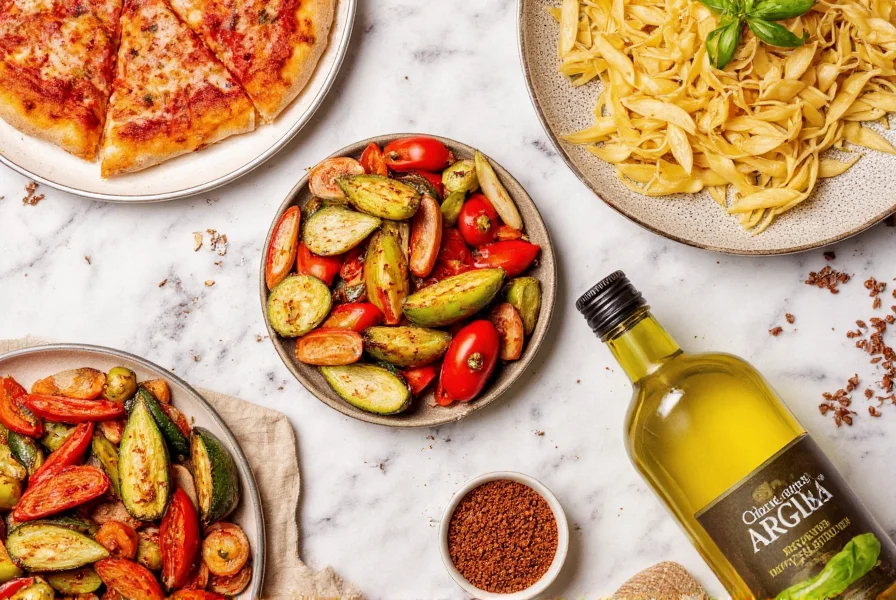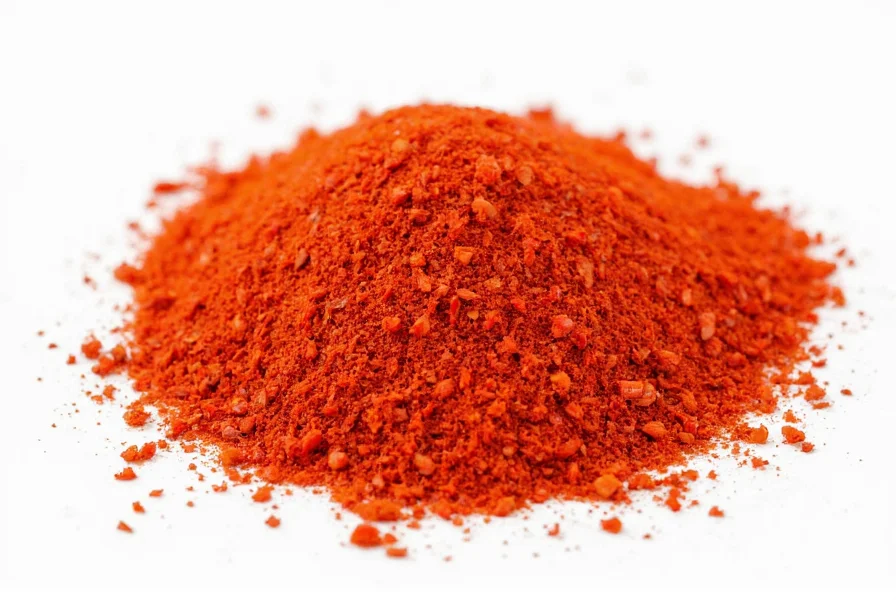When you reach for that familiar red seasoning at your favorite Italian restaurant, you're using crushed red pepper—a versatile pantry staple with culinary significance across global cuisines. This comprehensive guide explores its composition, heat characteristics, and practical applications to help you maximize its potential in everyday cooking.

Composition and Manufacturing Process
Crushed red pepper begins as fully ripened red chili peppers, typically cayenne but often including jalapeños, serranos, or regional varieties. Manufacturers harvest these peppers at peak maturity, then carefully dry them using one of two methods:
- Air-drying - Traditional method preserving more nuanced flavors
- Dehydration - Faster process maintaining consistent heat levels
After drying, producers mechanically crush the peppers into irregular flakes ranging from fine particles to larger fragments. Crucially, unlike pure cayenne powder, crushed red pepper retains both the fruit (placenta) and seeds of the pepper. This combination creates its signature texture and variable heat distribution, as capsaicin—the compound responsible for spiciness—concentrates in the seeds and inner membranes.
Crushed Red Pepper vs. Similar Spices: Key Differences
Many home cooks confuse crushed red pepper with related products. Understanding these distinctions helps you select the right spice for your recipe:
| Spice Type | Composition | Heat Level Range | Flavor Characteristics |
|---|---|---|---|
| Crushed Red Pepper | Mixture of crushed dried peppers (cayenne, jalapeño, others) | 500-22,000 SHU | Complex, slightly smoky, variable heat intensity |
| Red Pepper Flakes | Typically identical to crushed red pepper (regional naming difference) | 500-22,000 SHU | Same as crushed red pepper |
| Cayenne Pepper | Pure ground cayenne peppers | 30,000-50,000 SHU | Consistently hot, sharper heat, less complex flavor |
| Paprika | Ground sweet or hot peppers | 100-500 SHU (sweet) or 500-1,500 SHU (hot) | Mild, sweet, earthy flavor with minimal heat |
While crushed red pepper and red pepper flakes represent the same product (differing only by regional labeling conventions), cayenne pepper delivers significantly more consistent and intense heat. The presence of seeds in crushed red pepper creates pockets of concentrated heat throughout your dish, unlike the uniform dispersion of pure cayenne powder.
Understanding Heat Variability in Crushed Red Pepper
Unlike standardized spice products, crushed red pepper exhibits natural heat variation due to several factors:
- Seed-to-fruit ratio - Higher seed content increases overall heat intensity
- Pepper maturity at harvest - Fully ripened peppers develop more capsaicin
- Environmental growing conditions - Temperature fluctuations and soil composition affect heat development
- Brand formulation - Manufacturers blend different pepper varieties for consistent flavor profiles
This natural variability explains why one brand's crushed red pepper might deliver noticeably more heat than another's. For consistent results in recipes, consider tasting a small amount before adding to dishes requiring precise heat levels.
Culinary Applications and Professional Techniques
Chefs value crushed red pepper for three distinctive culinary properties that differentiate it from powdered alternatives:
- Controlled heat distribution - Flakes don't disperse as readily as powders, allowing strategic placement of heat in dishes
- Texture contrast - Provides visual and textural interest that enhances eating experience
- Gradual flavor release - Heat develops more slowly during cooking compared to powders
Professional applications include:
- Infused oils - Steep flakes in olive oil for 24-48 hours to create versatile spicy oil
- Dry brines - Combine with salt and herbs for meat rubs that penetrate without burning
- Finishing spice - Sprinkle on finished dishes for immediate heat impact
- Sauce integration - Add early in cooking for mellowed heat or late for sharper spice

Nutritional Profile and Potential Health Benefits
Though used in small quantities, crushed red pepper contributes meaningful nutritional components to dishes:
- Vitamin A - One teaspoon provides approximately 15% of daily value, supporting vision and immune function
- Vitamin C - Significant antioxidant properties that degrade with prolonged cooking
- Capasaicin - The active compound may boost metabolism and provide anti-inflammatory effects
- Dietary fiber - From the pepper fruit and seed material
Research published in the Journal of Nutritional Science suggests regular consumption of capsaicin-containing foods may support metabolic health. However, these benefits typically require consistent consumption rather than occasional culinary use. The heat sensation from crushed red pepper also triggers endorphin release, creating the familiar 'chili high' many spice enthusiasts enjoy.
Optimal Storage Practices for Maximum Freshness
To preserve crushed red pepper's vibrant color, flavor, and heat intensity:
- Store in an opaque, airtight container away from light and heat sources
- Maintain consistent temperature below 70°F (21°C)
- Avoid storing above stoves or near dishwashers where humidity fluctuates
- Consider refrigeration in humid climates to prevent moisture absorption
- Use within 6-12 months for optimal flavor (though safe indefinitely)
Fresh crushed red pepper maintains a deep brick-red color. As it ages, the color fades toward brown, signaling diminished flavor compounds and reduced capsaicin concentration. Properly stored, high-quality crushed red pepper should retain its characteristic aroma when opened.
Substitution Guidelines and Recipe Adjustments
When substituting crushed red pepper, consider both heat level and texture implications:
- For red pepper flakes - Use 1:1 ratio (they're identical products)
- For cayenne powder - Use ⅓ amount (cayenne is significantly hotter)
- For fresh chilies - Substitute 1 teaspoon flakes for 1 small chopped chili
- For paprika - Use 2-3 times more for similar color, but expect minimal heat
When adjusting recipes, remember that crushed red pepper's heat develops differently than powdered alternatives. Flakes release capsaicin more gradually during cooking, so adding them early creates mellowed heat, while adding at the end preserves sharper spice. For precise heat control, toast flakes in a dry pan for 30-60 seconds before use to mellow their intensity.
Frequently Asked Questions
Is crushed red pepper the same as red pepper flakes?
Yes, crushed red pepper and red pepper flakes are identical products. The different names reflect regional marketing preferences rather than compositional differences. Both consist of dried, crushed chili peppers containing a mixture of fruit and seeds. Check ingredient labels to confirm they list only 'dried red peppers' without additional ingredients.
How does crushed red pepper's heat compare to other common spices?
Crushed red pepper ranges from 500 to 22,000 Scoville Heat Units (SHU), placing it between mild paprika (100-500 SHU) and pure cayenne powder (30,000-50,000 SHU). Its heat varies based on seed content and pepper varieties used. Unlike standardized powders, crushed red pepper creates 'hot spots' in dishes due to uneven seed distribution, making heat perception more intense in some bites than others.
What ingredients comprise commercial crushed red pepper?
Quality crushed red pepper contains only dried chili peppers, typically a blend of cayenne, jalapeño, and sometimes other varieties like serrano. The product includes both the pepper fruit (placenta) and seeds, which creates its characteristic heat variability. Check labels to avoid products with anti-caking agents or additional ingredients, which can dilute flavor. Authentic crushed red pepper should list simply 'dried red peppers' as the sole ingredient.
How long does crushed red pepper maintain optimal freshness?
Properly stored crushed red pepper maintains peak quality for 6-12 months. Store it in an opaque, airtight container away from light, heat, and moisture. Signs of degradation include faded color (from deep red to brown), diminished aroma, and reduced heat intensity. While it remains safe indefinitely due to its dry nature, flavor compounds degrade over time. For best results, purchase smaller quantities more frequently and check production dates when possible.
Can crushed red pepper cause digestive issues?
While generally safe, excessive crushed red pepper consumption may cause temporary digestive discomfort in sensitive individuals. Capsaicin stimulates digestive tract receptors, potentially causing heartburn, stomach pain, or diarrhea in large quantities. Most people tolerate culinary amounts without issues, but those with conditions like GERD or IBS may need to moderate intake. Start with small amounts if you're new to spicy foods, and remember that fat (like olive oil or cheese) helps neutralize capsaicin's effects.











 浙公网安备
33010002000092号
浙公网安备
33010002000092号 浙B2-20120091-4
浙B2-20120091-4